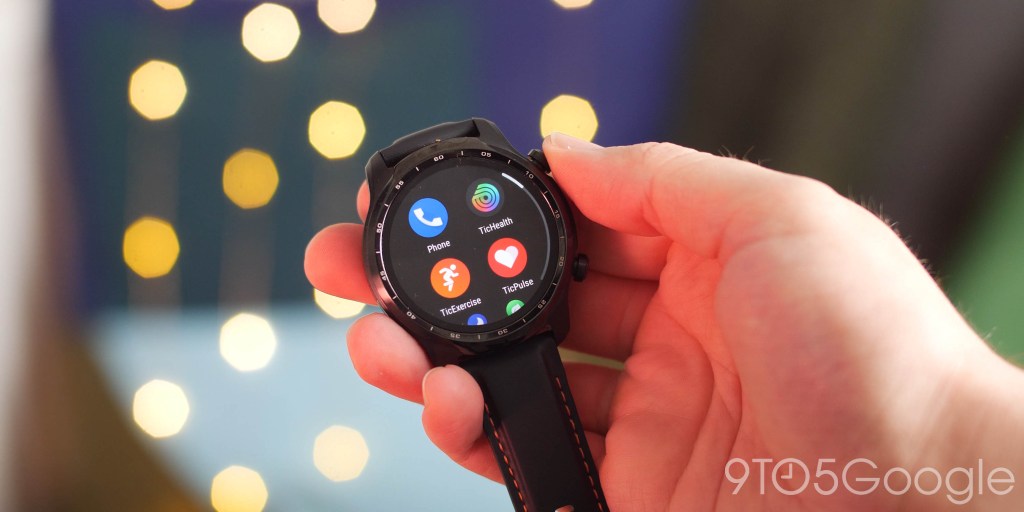
Here we are, a week after Samsung has started selling its first Wear OS smartwatch in years, the Galaxy Watch 4 series. These two smartwatches are flagships by almost every definition, but as we’ve had the chance to use them for a few weeks, there’s one thing that’s very clear. Samsung isn’t going to “save” Wear OS, that’s very much on Google’s shoulders.
As we detailed earlier this month, Samsung’s take on Wear OS is tailored to Galaxy smartphone users. Samsung has a heavy skin over Wear OS that looks like an updated version of Tizen and almost nothing like the Wear OS we’ve known for years, or what we’ve seen about the upcoming revamp. The entire skin pushes Samsung’s priorities through and through, with almost no Google apps out of the box and even Samsung’s Galaxy Wearable app handling the still-pretty-messy pairing process. Heck, Samsung even traded out Google’s navigation gestures in Wear OS, the one thing the company unarguably got right in older versions, for what was in place on Tizen smartwatches.
That’s all to say, Wear OS is the foundation, but everything we’ve seen on Samsung’s watch is not at all Google’s vision for wearables. It’s very much Samsung opinions being shown, and unfortunately, we still don’t know when we’re going to see Google’s ideas come through.
Next in line for Wear OS 3, at least officially, are updates for Fossil and Mobvoi smartwatches. These are both longtime partners of Google and run Wear OS in a mostly stock form, but it’s clear that’s starting to change. On the TicWatch Pro 3 and subsequent E3, Mobvoi tweaked Wear OS a bit with its own app drawer. The brand has also been offering its own health suite for years now.
Fossil is also starting to do this. On the new Gen 6 series, Fossil is expanding on its own health suite instead of relying on Google Fit, as it did in years past.
If Wear OS is truly opening the doors on manufacturer customizations, it only seems reasonable that these companies that have pushed the barrier for what they can do already would go further into their own priorities on a more customized version of Wear OS. Relying on third-party companies to use Wear OS simply will not let the platform shine for what it is at its core.
A good comparison here would be to smartphones. Android is an open-source operating system that virtually anyone can use, but there’s only one place you’ll find it completely unadulterated — a Google Pixel. Every single third-party OEM has its own set of goals and features, and as a result, Android tends to fade into the background. Just think of Samsung phones, which are not usually referred to as “Android phones” by their owners, but rather “Galaxy phones.”
For Wear OS to truly succeed, Google has to step into the ring.
Personally, I see only two ways Google can “save” Wear OS, and they’re both through hardware. The first is with a “Pixel Watch,” something for which fans have been waiting years. As a truly first-party product, this would allow Google to market the watch directly to its Pixel smartphone customers and really let its core values shine through, those obviously being ambient computing and the Assistant. This could arrive in any number of ways. Perhaps we see the return of the goals from Google Now in some form, like we saw in later revisions of Wear OS 2. Or maybe an expansion of Assistant to improve on-device recognition and leverage powerful new features.
The other solution is through Fitbit. Now owned by Google, we already know that Fitbit’s health suite is core to the new Wear OS, at least outside of Samsung devices. However, the brand recognition around Fitbit is still very much in fitness, meaning that the watch would have its priorities in that department with other features taking a backseat. That’s not to say that Google can’t work with that, it very much can. But Fitbit clearly still operates with its own ideas, its own app, its own experience. The recent reveal event for the Fitbit Charge 5 is evidence enough of that. All of Fitbit’s ideas and functions can surely mesh well with Wear OS and Google’s ideas, but if the product is sold as a “Fitbit” first and foremost, the focus will be on health by design.
It’s largely unclear what path Google will take, but we do know a Wear OS-based Fitbit smartwatch is in the pipeline. Aside from some rumors, there’s not much evidence claiming the same of a “Pixel Watch” coming anytime soon. At this point, where so many apps and smartwatches are in limbo, we can only hope that Google doesn’t wait too long. There has quite literally never been a time where it’s been more important.
More on Wear OS:
- Google Messages now rolling out overhauled Wear OS app
- ‘Snapdragon 5100’ may be a relatively minor Wear OS chip upgrade, new details hint
- Hands-on: Google Maps for Wear OS 3 keeps it simple, leaves older hardware with a broken mess
FTC: We use income earning auto affiliate links. More.





Comments